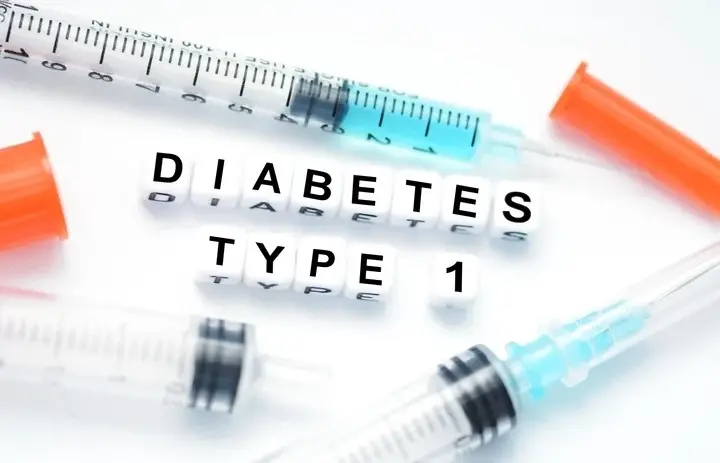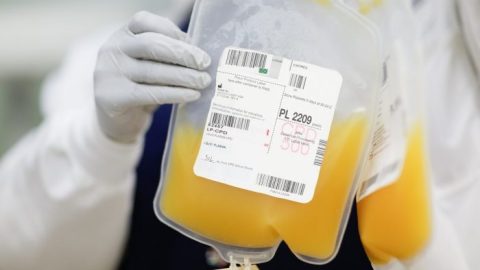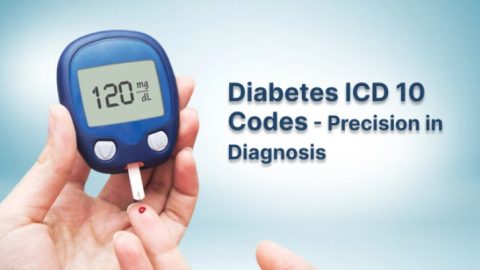Type 1 diabetes is a chronic condition that has received growing attention in both medical research and patient communities. When people search for resources under the phrase “Sana Type 1 Diabetes”, they are often looking for detailed explanations, trustworthy information, and a sense of clarity about this lifelong condition. The term may reflect an interest in holistic well-being, innovative approaches to management, or simply a way to understand the deeper aspects of living with diabetes.
Unlike type 2 diabetes, which is often associated with lifestyle and develops gradually, type 1 diabetes occurs when the body’s immune system mistakenly attacks and destroys insulin-producing beta cells in the pancreas. As a result, the body cannot produce insulin, a hormone that regulates blood sugar. Without proper treatment, this leads to dangerously high blood glucose levels, which can damage organs and systems throughout the body.
In this comprehensive guide, we will explore what type 1 diabetes really means in the context of health and wellness, why it develops, how it can be diagnosed, and what steps people living with the condition can take to live long, fulfilling lives. By the end of this article, you will have a clearer understanding of how type 1 diabetes works, how to manage it, and how advances in treatment are shaping the future.
Understanding Sana Type 1 Diabetes

What Makes Type 1 Diabetes Different
Type 1 diabetes stands apart from other forms of diabetes because it is an autoimmune disorder rather than a metabolic syndrome. In most cases, the onset occurs in childhood, adolescence, or early adulthood, although adults can also develop it later in life. The critical point is that the immune system mistakes pancreatic cells for harmful invaders and destroys them. This destruction prevents the pancreas from releasing insulin, which is essential for allowing glucose to enter cells and provide energy.
In practical terms, this means that a person with type 1 diabetes cannot survive without external insulin. Oral medications or lifestyle changes alone are not enough to compensate for the loss of insulin production. Understanding this fundamental difference is crucial for distinguishing type 1 diabetes from type 2, which can often be managed initially with diet, exercise, and medication.
The Role of Insulin in the Body
Insulin is often described as a “key” that unlocks the doors to the body’s cells, allowing glucose to enter. Without insulin, sugar builds up in the bloodstream instead of being converted into energy. Over time, consistently high blood sugar levels can damage nerves, blood vessels, eyes, kidneys, and the heart.
In people living with type 1 diabetes, this delicate balance is disrupted, and daily management is required to mimic the natural role of insulin. This usually involves multiple insulin injections or the use of an insulin pump, combined with careful monitoring of blood sugar through continuous glucose monitors or finger-prick testing.
Causes and Risk Factors
Genetic Influences
Genetics play an important role in the likelihood of developing type 1 diabetes. Although it does not follow a simple inheritance pattern, having a family history of the condition increases the risk. Scientists have identified specific genes related to immune system function that may make some people more susceptible to autoimmune attacks on the pancreas.
Still, not everyone with a genetic predisposition will develop type 1 diabetes. This indicates that while genes set the stage, other factors trigger the actual onset. Research continues to uncover how these influences interact in complex ways.
Environmental Triggers
Environmental factors are believed to act as “switches” that activate the autoimmune process. Viral infections, early dietary factors, or exposure to certain environmental chemicals may play a role. While these triggers are not yet fully understood, they are thought to work in combination with genetic vulnerability.
For example, some studies suggest that viral infections such as enteroviruses may set off the immune system to attack pancreatic cells. Others point to early exposure to cow’s milk proteins or low vitamin D levels as potential risk factors. While more research is needed, the evidence highlights the multifactorial nature of type 1 diabetes.
Symptoms and Early Warning Signs
Recognizing the Onset
The symptoms of type 1 diabetes often appear suddenly and can escalate quickly. Unlike type 2 diabetes, which may develop silently over many years, type 1 often reveals itself within days or weeks. The most common early signs include excessive thirst, frequent urination, unexplained weight loss, and constant fatigue.
For children and teenagers, these symptoms may be mistaken for normal growth changes or viral illnesses. However, the rapid onset should not be ignored, as untreated high blood sugar can lead to a dangerous condition known as diabetic ketoacidosis (DKA).
Diabetic Ketoacidosis (DKA)
DKA occurs when the body is unable to use glucose for energy and begins breaking down fat at an accelerated rate. This process releases ketones, which build up in the blood and make it acidic. Symptoms of DKA include nausea, vomiting, abdominal pain, rapid breathing, and confusion. Without prompt treatment, DKA can be life-threatening, making early diagnosis of type 1 diabetes crucial.
Diagnosis and Medical Testing
Blood Sugar and A1C Tests
Diagnosis typically begins with a blood test to measure glucose levels. A fasting blood sugar level above 126 mg/dL or a random reading above 200 mg/dL can indicate diabetes. However, to determine whether it is type 1, additional tests are required.
The A1C test is another common method, which reflects average blood sugar levels over the past two to three months. Elevated A1C levels confirm that glucose has been consistently high, but it cannot differentiate between type 1 and type 2 diabetes.
Autoantibody and C-Peptide Testing
To confirm type 1 diabetes, doctors may check for specific autoantibodies that signal an autoimmune response against the pancreas. In addition, C-peptide testing can measure how much insulin the pancreas is still producing. Low levels of C-peptide usually confirm the diagnosis of type 1 diabetes, since the pancreas is no longer functioning properly.
Treatment and Daily Management
Insulin Therapy
Insulin therapy is the foundation of managing type 1 diabetes. Different types of insulin are available, ranging from rapid-acting to long-acting, allowing for tailored treatment plans. The goal is to mimic the body’s natural insulin release as closely as possible, balancing blood sugar levels throughout the day and night.
Injections remain a common method, though many people now use insulin pumps that deliver precise amounts of insulin continuously. Some pumps can even integrate with continuous glucose monitors, offering automated adjustments to reduce the burden of constant decision-making.
Blood Sugar Monitoring
Managing type 1 diabetes requires frequent monitoring of blood sugar levels. Continuous glucose monitors (CGMs) have revolutionized care by providing real-time data and alerts when levels rise too high or fall too low. For others, traditional finger-prick tests remain the standard, though they require multiple checks each day.
Accurate monitoring helps guide insulin doses, food choices, and activity levels, preventing both dangerous highs and lows. This constant attention is demanding but necessary for long-term health.
Lifestyle Considerations
Nutrition and Meal Planning
Food choices play a critical role in blood sugar management. Carbohydrates directly affect glucose levels, so careful planning is required. Many people with type 1 diabetes learn carbohydrate counting, which helps them match insulin doses to the amount of carbohydrates consumed.
Balanced meals that include proteins, healthy fats, and fiber can help stabilize blood sugar and prevent sudden spikes. There is no one-size-fits-all diet, but consistency and awareness are key. Consulting with a registered dietitian can help tailor a plan that supports both blood sugar control and overall health.
Exercise and Physical Activity
Exercise is beneficial for everyone, but it requires special consideration for people with type 1 diabetes. Physical activity can lower blood sugar by increasing insulin sensitivity, but it can also increase the risk of hypoglycemia if not carefully managed.
Planning ahead by adjusting insulin doses, eating before activity, or carrying quick sources of glucose can make exercise safe and enjoyable. With proper precautions, physical activity can greatly improve quality of life and reduce long-term complications.
Long-Term Complications
Risks of Poorly Controlled Diabetes
Without consistent management, type 1 diabetes can lead to serious complications. High blood sugar over time damages blood vessels and nerves, leading to conditions such as diabetic neuropathy, kidney disease, vision problems, and cardiovascular disease.
These complications do not occur overnight, but they highlight the importance of diligent management from the very beginning. Each step taken to maintain healthy blood sugar reduces the risk of long-term damage.
Emotional and Psychological Impact
Living with type 1 diabetes also affects mental health. The constant need for vigilance can lead to stress, burnout, or anxiety. For children, teenagers, and parents, the emotional burden can be especially heavy. Access to counseling, peer support groups, and diabetes education can help individuals cope with the daily challenges.
Advances in Treatment and Research
Artificial Pancreas Technology
One of the most promising developments in recent years is the artificial pancreas system. These closed-loop devices combine insulin pumps with continuous glucose monitors to automatically adjust insulin delivery. While not yet perfect, they represent a major step forward in reducing the burden of constant management.
Stem Cell and Immunotherapy Research
Scientists are also exploring ways to regenerate insulin-producing cells or protect existing ones from immune attack. Stem cell therapies and immunotherapies are being tested in clinical trials, with the hope that one day a functional cure will be possible. While these treatments remain experimental, they offer real hope for the future of diabetes care.
Living Well With Sana Type 1 Diabetes
Building a Support System
Successfully living with type 1 diabetes requires more than medical treatment—it requires community and support. Family, friends, healthcare providers, and peer groups all play a role in creating an environment where individuals can thrive. Sharing experiences with others facing the same challenges helps reduce feelings of isolation and strengthens resilience.
Looking Ahead With Optimism
Although type 1 diabetes is a lifelong condition, advances in technology, medicine, and awareness mean that people today can live longer and healthier lives than ever before. With proper treatment, dedication, and support, those with type 1 diabetes can pursue careers, travel, build families, and enjoy life to the fullest.
Conclusion
The journey of understanding Sana Type 1 Diabetes is one of knowledge, vigilance, and hope. From the biological mechanisms that trigger it to the lifestyle adjustments required for management, every aspect of this condition demands careful attention. Yet, with modern treatments and ongoing research, the future continues to brighten for those living with it.
Awareness and education remain the most powerful tools. By spreading accurate information, offering support, and encouraging healthy practices, we can help ensure that type 1 diabetes does not define lives but instead becomes one part of a much larger, fulfilling story.
FAQs about Sana Type 1 Diabetes
What is Sana Type 1 Diabetes?
Sana Type 1 Diabetes refers to the autoimmune form of diabetes where the pancreas can no longer produce insulin. It is called “type 1” because it is distinct from type 2 diabetes, which is related to insulin resistance. The term “Sana” often reflects the idea of holistic awareness, complete knowledge, and well-being in understanding this chronic condition.
How is Sana Type 1 Diabetes diagnosed?
Diagnosis is made through blood sugar testing, hemoglobin A1C tests, and sometimes autoantibody or C-peptide tests. Doctors confirm type 1 diabetes when blood sugar is consistently high and the pancreas shows little to no insulin production. Early detection is critical to prevent serious complications such as diabetic ketoacidosis.
Can Sana Type 1 Diabetes be cured?
Currently, there is no cure for type 1 diabetes. Treatments focus on lifelong insulin therapy, careful monitoring of blood sugar, and lifestyle management. However, research in stem cells, immunotherapy, and artificial pancreas systems shows promise for future breakthroughs that may one day lead to a functional cure.
What are the main symptoms of Sana Type 1 Diabetes?
The most common symptoms include excessive thirst, frequent urination, sudden weight loss, blurred vision, fatigue, and constant hunger. In children, these symptoms can appear quickly and are sometimes mistaken for viral illnesses, making awareness and timely testing essential.
How can someone live well with Sana Type 1 Diabetes?
Living well with type 1 diabetes requires a combination of insulin therapy, balanced nutrition, regular exercise, and emotional support. Advances in technology such as continuous glucose monitors and insulin pumps have made management easier. With proper care and support, people with type 1 diabetes can lead long, active, and fulfilling lives.
Disclaimer: This article on Sana Type 1 Diabetes is for informational and educational purposes only. It is not intended to replace professional medical advice, diagnosis, or treatment. Always consult your doctor or qualified healthcare provider with any questions you may have regarding a medical condition. Never disregard professional advice or delay seeking it because of something you have read here.


